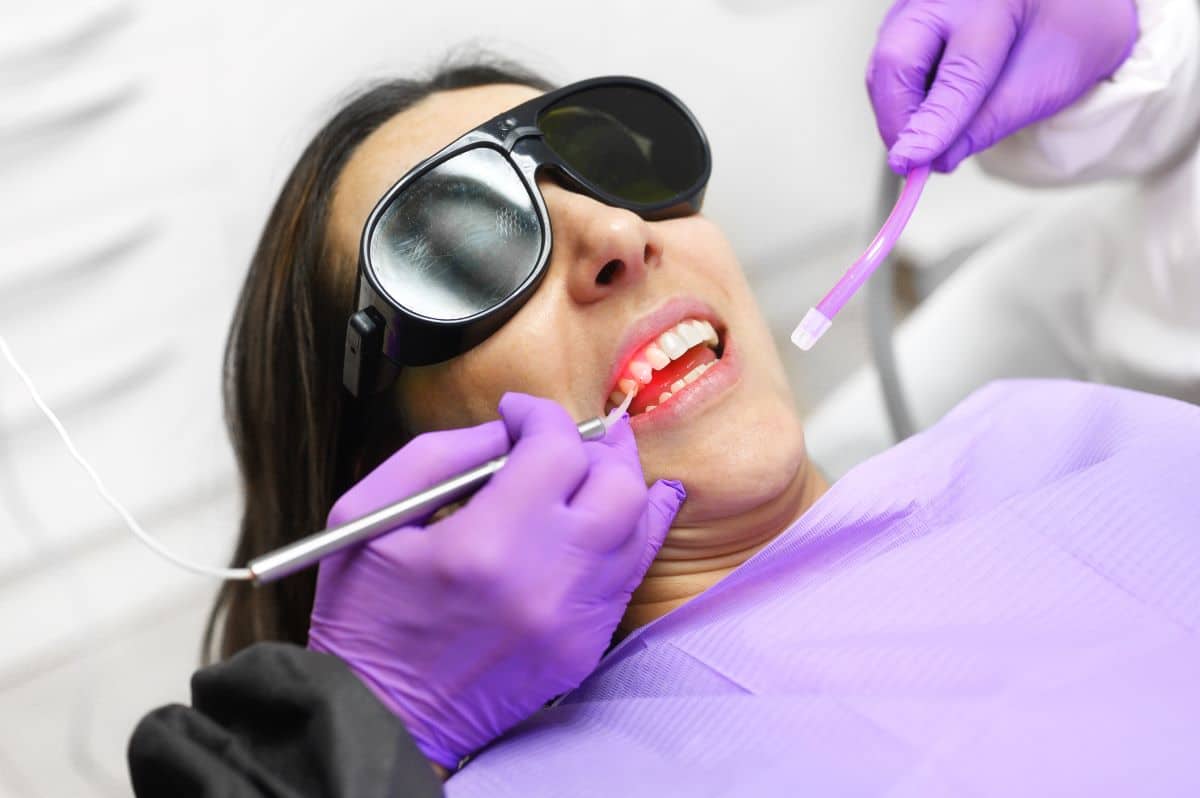Were you recently diagnosed with gum disease? If so, you’re not alone. Nearly 50% of people over age 30 have periodontal disease, which quickly results in the need for treatment. Without prompt care, the condition will only get worse over time, likely causing you to develop painful abscesses and even lose teeth. Fortunately, it’s possible to treat this condition without surgery by getting help from a skilled dentist. Want to know more? Here’s a look at four things you need to know about non-surgical gum therapy.
Non-Surgical Gum Therapy Can Treat Periodontal Disease
Although it’s not always possible to avoid gum surgery, non-surgical gum therapy can improve your chances. The non-surgical treatments address the root of the problem by restoring the health of your gums.
Healthy gums firmly attach to the root of the gums, creating a barrier against tartar and harmful bacteria. As periodontal disease progresses, however, gum tissue detaches from the tooth and creates large pockets. Bacteria infiltrate the pockets and cause plaque to develop. Then, as the plaque turns to tartar, damage to the gums increases.
When caught early enough, non-surgical gum therapy can help reverse the damage and encourage the gum tissue to start healing. The treatments also help eliminate bacteria, preventing infections and abscesses from developing.
Tooth Loss Risk Decreases After Non-Surgical Gum Therapy
Periodontal disease is the number one cause of tooth loss in adulthood. So, when you choose to correct the condition with non-surgical gum therapy, you effectively reduce your risk of losing teeth. Retaining all your natural teeth helps prevent the risk of crooked teeth due to migration. Plus, the existing teeth help prevent further tooth loss while preserving the health of your jawbone.
Without treatment, gum disease destroys the soft tissue around each tooth. The healthy one- to three-millimeter-deep periodontal pockets deepen and leave teeth anchored only by their connection to your jawbone. Your teeth will start to loosen as a result, making it hard to speak clearly and chew your food. Over time, the loose teeth will fall out, resulting in deterioration of your jawbone.
Dentists Have Multiple Non-Surgical Gum Therapy Approaches
There’s no one right approach to treating periodontal disease. For that reason, dentists have several non-surgical gum therapy options to consider for all their patients.
Systemic Antimicrobials
Since bacteria paves the way for ever-worsening gum disease, systemic antimicrobials are typically the first line of treatment. You’ll likely need to have additional non-surgical gum therapy procedures completed to fully resolve the problem, however.
Your dentist will need to gauge your health needs to decide if you should take the medications orally or have them applied topically right at the gumline. In some cases, you may need to let the antimicrobials sit on your teeth by using a tray delivery system. No matter how you use the medications, they will kill all the harmful bacteria, which helps treat underlying infections and jumpstarts the healing process.
Scaling and Root Planing
Scaling and root planning is the process of manually removing tartar and reducing its likelihood of returning. Your dentist will usually start with scaling to scrape away the plaque deposits in the periodontal pockets. The removal of the tartar also helps get rid of bacterial toxins, creating a clean environment conducive to healing.
The root planing process smooths out the root of each tooth, so the bacteria have a hard time sticking to the surface. Together, these procedures encourage the gums to heal, hopefully shrinking the periodontal pockets over time.
Laser Therapy
Laser therapy for gum disease quickly removes damaged periodontal tissue and bacteria in an instant. The laser blasts away plaque and the toxins left behind by the bacteria as well. After that, your dentist uses the laser to remove rough spots on the surface of your tooth. The effects are similar to scaling and root planing but happen much faster and with minimal discomfort.
You can expect quick healing times as well, although it’ll take a while for the healthy gum tissue to regenerate. As that happens, the periodontal pockets will tighten around each tooth. You may then notice that it’s easier to chew your food without worrying about losing your teeth.
The treatment you need largely depends on the severity of the condition and its underlying causes. Your dentist will help you find the right treatment during the consultation process.
Come Back for Periodic Non-Surgical Gum Therapy Maintenance
Even with prompt non-surgical gum therapy, periodontal disease can come back. To keep that from happening, you should plan to come into the dental clinic quarterly for maintenance visits. At these visits, your dentist will assess the health of your gums, clean your teeth, and decide if you need additional treatments at that time.
If you’d like to learn more about options for gum therapy, reach out to our team at Dolphin Dental Group with a call to 727-393-9334. We’re happy to help you find a convenient time to come into the clinic for an exam and consultation. At that visit, your dentist will help you learn all you need to know about gum disease and its treatment options. You can then use that information to make well-informed care decisions, and then schedule your selected treatment procedures.
Comments are closed.

